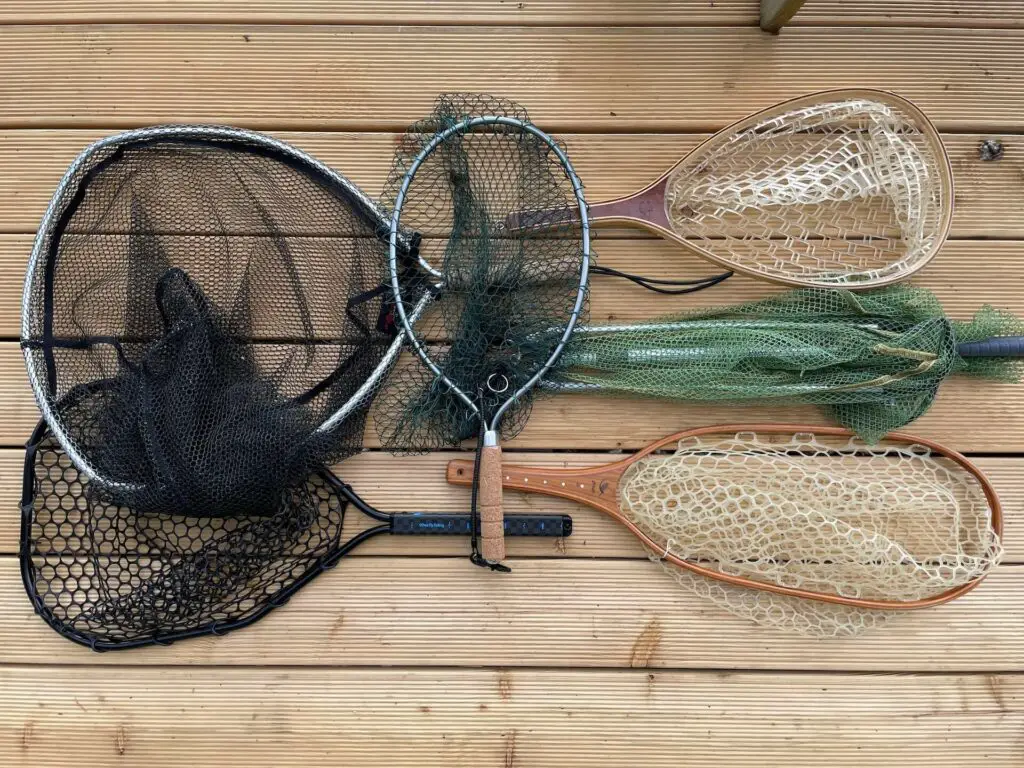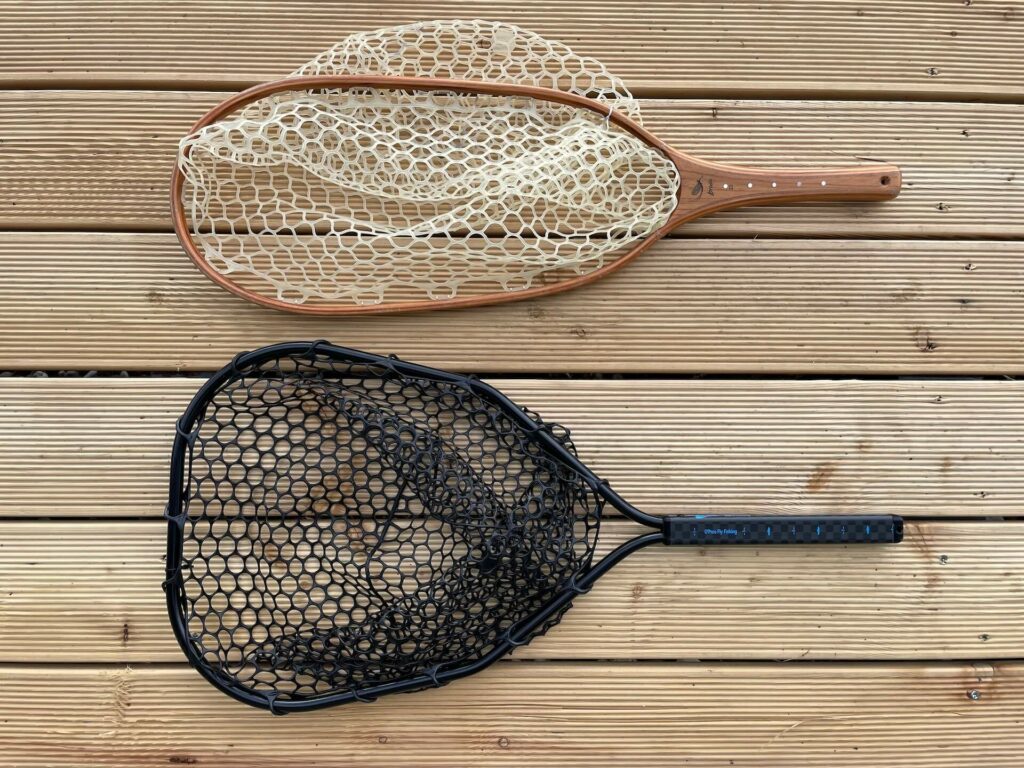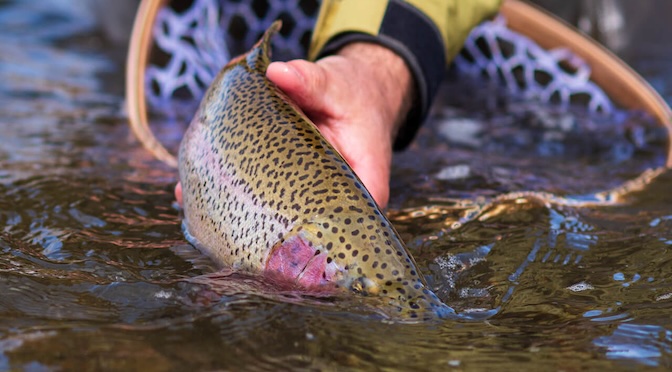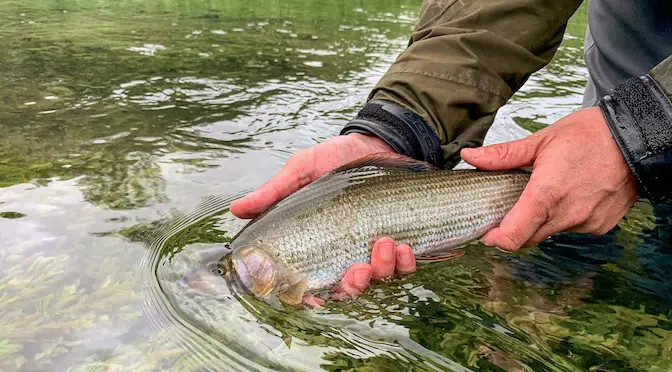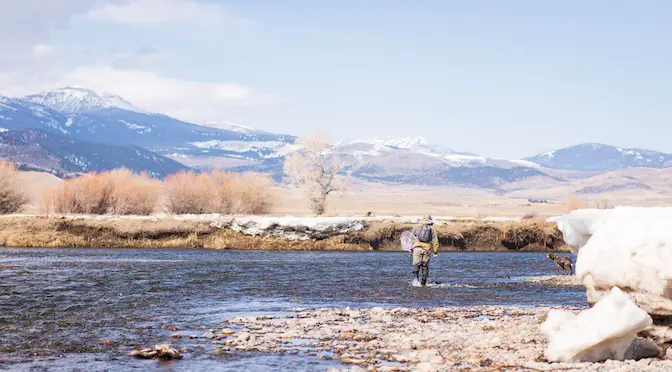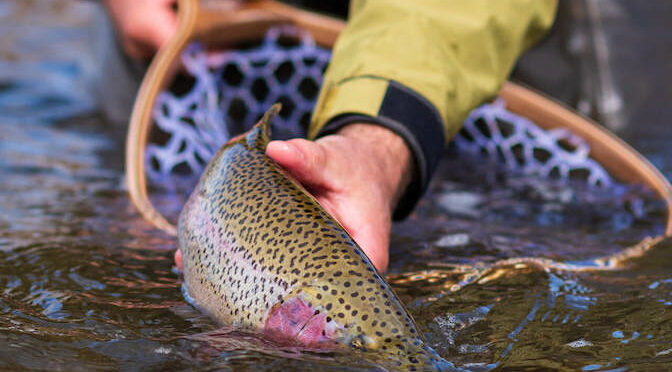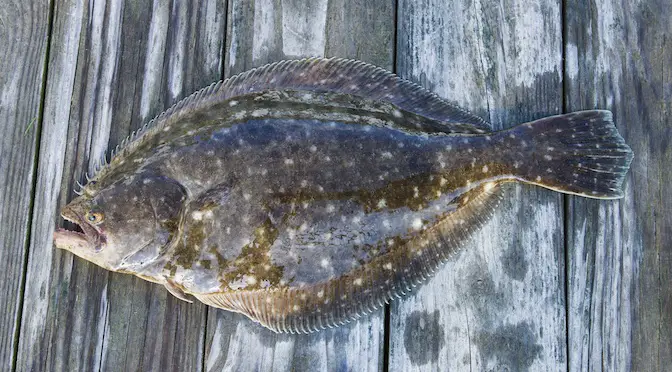Last updated on January 9th, 2024.
- Wading Wisdom #13 – Simon Gawesworth - July 7, 2025
- On the Water with the Korkers Bantam Lite - June 26, 2025
- How to Find Trout in Rivers & Streams Anywhere - June 13, 2025
Fishing is more than just a hobby; it’s a way of connecting with nature, finding peace by the water, and maybe catching a fish or two.
If you’re into fly fishing, then you know that having the right gear is crucial. That said, one of the essential tools in a fly angler’s arsenal is a landing net. But with so many options out there, how do you choose the perfect one? Don’t worry; we’ve got you covered with this comprehensive guide that breaks down all the basics without getting too fancy!
How to choose the right size
Let’s start with the basics: size. Just like how you wouldn’t use a tiny spoon to eat soup, you don’t want to use a small net for a big fish.
Imagine catching a beautiful, sizable trout, and your net is too small—disaster, right? To avoid this, consider the size of the fish you’re after. If you’re aiming for smaller ones like trout, a net with a hoop size of around 14 to 16 inches will do the trick. But if you’re eyeing those hefty salmon or pike, go for a larger net, maybe around 20 inches or more.
Your landing net is not just a tool; it’s an extension of your fishing experience, ensuring that the thrill of the catch doesn’t turn into a frustrating moment of lost opportunity. So, when you’re sizing up your landing net, think of it as the reliable partner that ensures your fishing tales remain epic and your memories unforgettable.
How to choose a landing based on species
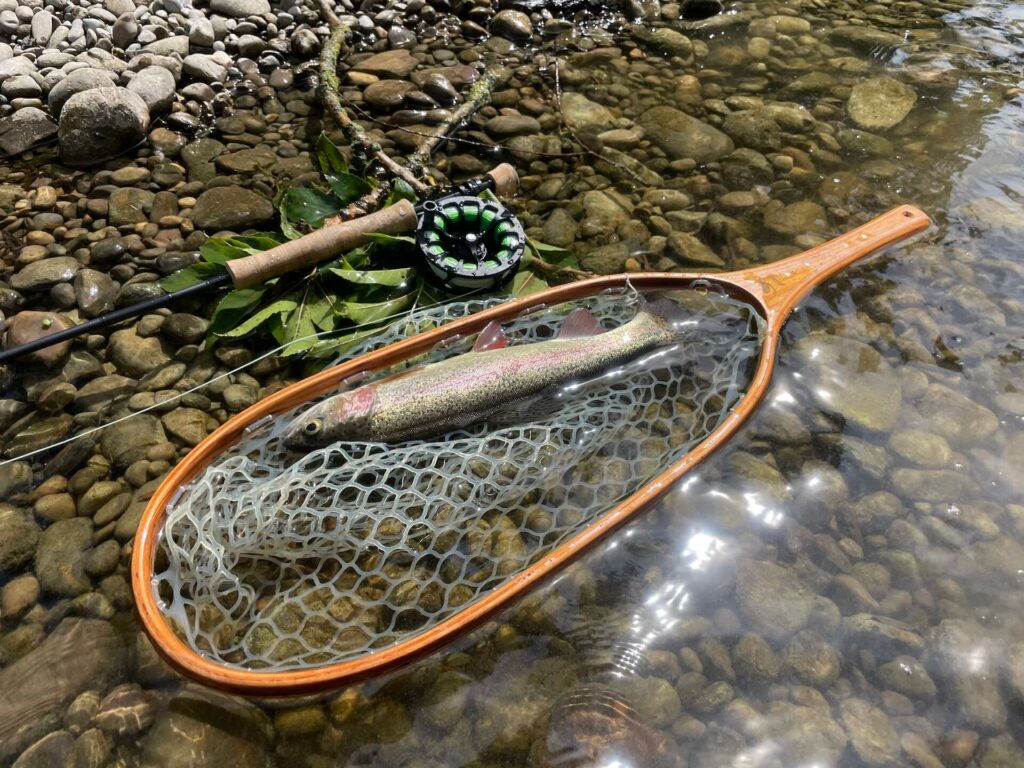
Different fish means different needs—and that includes the way you handle them. For instance, some fish, like pike, have sharp teeth that can get caught in a regular net—a situation you wouldn’t want to be in. To avoid fishy dental disasters, consider a net with rubberized mesh. This prevents those teeth from causing any harm to the net or, more importantly, to your fingers.
Add to that, choosing a net with rubberized mesh isn’t just about ensuring your fingers remain intact; it’s a gesture of respect towards the aquatic world. By opting for a net that safeguards both the fish and your hands, you’re not just making a practical choice but also contributing to the conservation of these incredible creatures, ensuring they can thrive in their natural habitats for generations to come.
How to choose based on the fishing environment
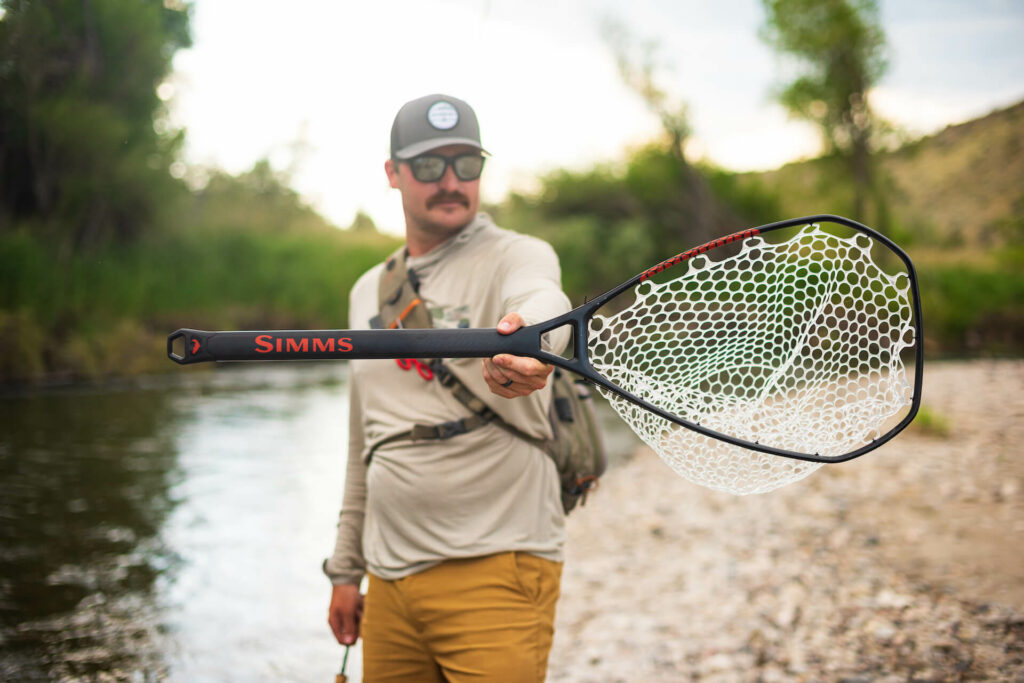
Are you a river person or a lake lover? The environment you fish in should influence your net choice. For open waters like lakes, a net with a longer handle provides the reach you need, especially if you’re dealing with deep waters.
In contrast, for those cozying up to small rivers or streams, a compact, foldable net is practical, ensuring you can maneuver easily in tight spots and avoid getting caught up in bushes or rocks, making your fishing experience more efficient and enjoyable.
Your choice of net should harmonize with the melodies of the water bodies you frequent, whether they’re the melodious murmurs of a meandering stream or the deeper tunes of a serene lake. The right net, like a well-chosen fishing spot, enhances your experience, making sure that each moment spent by the water is not just about the catch but the harmony between you, your gear, and nature’s rhythm.
How to choose based on use case
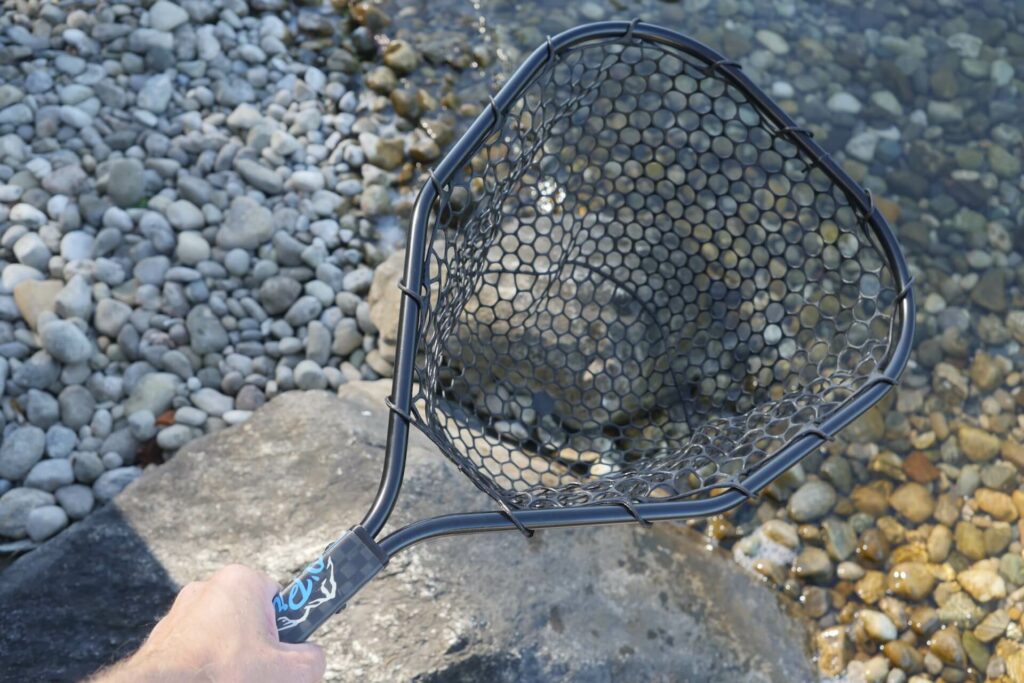
Are you the catch-and-release champ, or do you enjoy taking your catch home for a tasty dinner? For catch-and-release heroes, a net with a knotless mesh is ideal. It’s gentle on the fish’s scales and fins, ensuring they swim away happily after the photo op. But if you’re planning a fish fry, you need a sturdier net that can handle the weight without bending like a noodle.
Some nets even come with measuring rulers, making it super easy to see if your catch meets the legal size. With a quick glance, you can ensure that your catch complies with legal size limits, fostering responsible fishing practices and contributing to the sustainability of aquatic ecosystems.
By choosing a net tailored to your specific purpose, you enhance your angling experience and play a vital role in preserving the natural wonders beneath the water’s surface.
How to choose a landing net material
Nets come in all sorts of materials, each with its perks. Wooden nets are like the classics of the fishing world. They’re light, they float (a big bonus if you’re prone to dropping things in the water), and they have that timeless charm. Aluminum nets are lightweight and durable, perfect for saltwater adventures. They don’t corrode, so they’ll last you a good while. If you want something that balances strength and weight, look into nets made from composite materials. And then there are rubber-coated nets—these are gentle on both the fish and your hooks. No more tangled mess to deal with!
Conclusion on How to Choose the Right Fly Fishing Net
When it comes to fishing, your choice of a landing net is like picking the perfect tool for a job. It’s not just about getting any net; it’s about finding the right one for your needs and the fish you’re after. Think of it this way: your landing net is your fishing buddy, always there to help you get that big catch safely. Choosing the right size is like having the right-sized glove—it ensures a perfect fit. You wouldn’t want a small net for a big fish, right?
Considering the type of fish you’re after is crucial, too. Some have sharp teeth that can get tangled in regular nets, so having a net with special mesh can save both the fish and your fingers. Where you fish also matters: a longer handle is handy for deeper waters, while a foldable net is great for tight spots like small streams.
Lastly, the material of the net is also important. Remember, wooden nets are classic and light, while aluminum ones are durable and perfect for the sea. Rubber-coated nets make sure your hooks and the fish don’t get all tangled up.
Now, you’re ready to head to the waters with the perfect net, so let the fishing adventures begin. Happy fishing!
Frequently Asked Questions: How to Choose the Right Fly Fishing Net
Why do I need a specific landing net for fly fishing?
Fly fishing landing nets are designed with the fish’s safety in mind. They often come with rubber or soft nylon mesh to minimize the risk of injuring the fish, especially if you’re practicing catch and release. These nets also help protect the fish’s protective slime layer, ensuring a safer release back into the water.
What should I consider in terms of net mesh material?
Rubber mesh is the most popular choice for fly fishing. It’s gentle on the fish, doesn’t entangle hooks easily, and is durable. Traditional nylon or cotton mesh, while lighter, can potentially harm the fish’s scales, fins, and slime coat. Always look for a net material that’s fish-friendly and ensures easy hook removal.
How do I determine the best net size for fly fishing?
The best size largely depends on the species you’re targeting. For smaller trout, a net with a hoop size of around 8-15 inches would suffice. If you’re aiming for larger fish like salmon or steelhead, consider a net with a hoop size upwards of 20 inches. Balance this with the portability and weight you’re comfortable with, especially if you’re wading or hiking to fishing spots.
What handle length is best for wading versus boat fishing?
For wading, a shorter handle (around 6-12 inches) is often preferred as it’s more manageable and can be easily attached to your vest or belt. For boat fishing, especially if you’re targeting larger fish, a longer handle (20-30 inches or even more) can be more practical, giving you extended reach to net fish alongside the boat.
Does the shape of the net hoop matter?
Yes, the shape can influence how easy it is to scoop up fish. Teardrop-shaped nets are versatile and suitable for a range of fish sizes. D-shaped nets, with a flat edge, can be more comfortable to position against the stream or river bed. The choice largely depends on personal preference and the specific fishing situations you anticipate.
Why you should trust us: Leonard Schoenberger and his team spend hundreds of hours out on the water each year testing and reviewing gear. Their goal is to help you make better purchase decision and have more fun out fishing.

